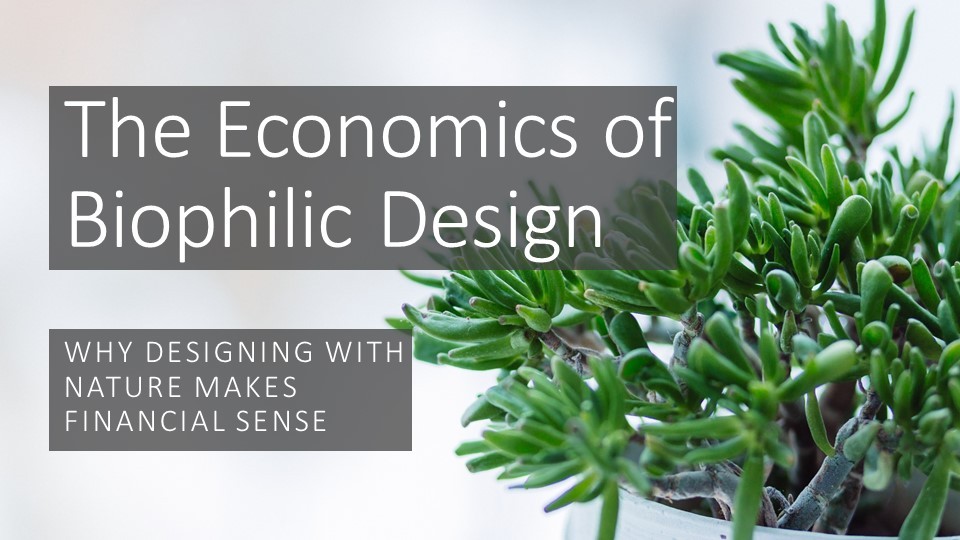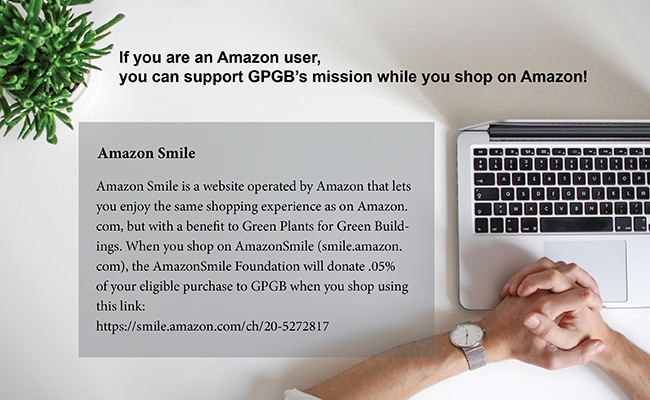
Greetings like-minded nature advocates,
The practice of giving thanks brings reflection and it occurs to me that there is no more critical time than now, during COVID, to be sharing important information about how access to nature promotes wellbeing, health, and happiness.
With quarantines in place, could it be possible that we are now spending even more than 90% of our time indoors? Sadly, yes.
Could it be that receptivity to biophilic design is growing as a result? Happily, yes. Thanks to your support, actions, and social media posts, we are seeing this on a grass-roots level.
So how do we move this receptivity into the C-level suites where the decisions to specify biophilic design are made?
We learn more about their decision-making process and their barriers to specifying biophilic design. Over the next weeks, GPGB’s Survey on Biophilic Design: Indoor Plants is being distributed to the members of our allied professional organizations. The results will tell us what information these decision-makers need to know to begin incorporating biophilic design into their buildings. Our latest survey partner is the International Interior Design Association (IIDA). A huge thank-you to Katilyn Mascatelli, Ph.D., at Phipps Conservatory who designed the survey logic, and the GPGB education committee team who developed the survey; Joe Zazzera, Sonja Bochart, and Richard Piacentini.
I’m representing GPGB on the Technical Advisory Group for Dr. Liping Wang at the University of Wyoming who is conducting research to quantify the effects of indoor greenery systems on building energy consumption and occupant thermal comfort. Funded in part by the National Science Foundation, Dr. Wang explains “The knowledge gained in this study will form the scientific foundation of design guidance for architects, interior designers and engineers on indoor greenery systems — and will promote the integration of indoor greenery with HVAC systems for energy efficiency in future buildings.” Read more about the research goals here.
For decision-makers, these research results may make a compelling case for biophilic design.
Resources for You
Biophilic Design Talking Points
Each one of us who advocates for biophilic design contributes to the vision of a healthier future. To support you in your conversations, Green Plants for Green Buildings has created an edited version of the continuing education course, The Economics of Biophilic Design. The information looks at the science behind the crucial role nature plays in maintaining our wellbeing, and includes research data from five sectors (education, health care, retail, workplace, and communities) on the impact biophilic design has on health, productivity and profits. Click here to download the pdf.
Fun with Nature
Biomimcry.org’s 30 Days of Reconnection. In the spirit of reconnecting with the natural world around us, the Biomimicry.org team has put together a 30-day course of their favorite biomimicry activities. What a wonderful way to supplement and enrich the distance learning many young people are experiencing during COVID. Click here to discover dozens of resources to help you build your own memorable and sharable learning experience. And this video will give you a brief intro into biomimicry’s potential to enhance our lives.
Thanks-giving
Thanks to GPGB Supporters, the mission to communicate nature’s benefits is being accomplished. The demand for indoor nature is growing, even in these challenging times, and perhaps because of these challenging times.
If you are not already a Supporter, and if, after first taking care of yourself and your dependents, the spirit moves you, please consider joining GPGB’s mission to increase everyone’s access to nature in the built environment.
#StayPlanted and Be well,
Mary Golden
Advocacy Incubator
In November we learned that, due to our participation in Guidestar’s 501-C3 transparency protocols, GPGB is enrolled in AmazonSmile Foundation charitable giving program, AmazonSmile.
Amazon Smile is a website operated by Amazon that lets you enjoy the same shopping experience as on Amazon.com, but with a benefit to Green Plants for Green Buildings. When you shop on AmazonSmile (smile.amazon.com), the AmazonSmile Foundation will donate .05% of your eligible purchase to GPGB when you shop using this link: https://smile.amazon.com/ch/20-5272817.
So if you are shopping on Amazon this season, please consider using this link and help us accelerate the adoption of biophilic design. We’re earmarking the AmazonSmile revenue to fund the conversion of our CE courses to online courses.


